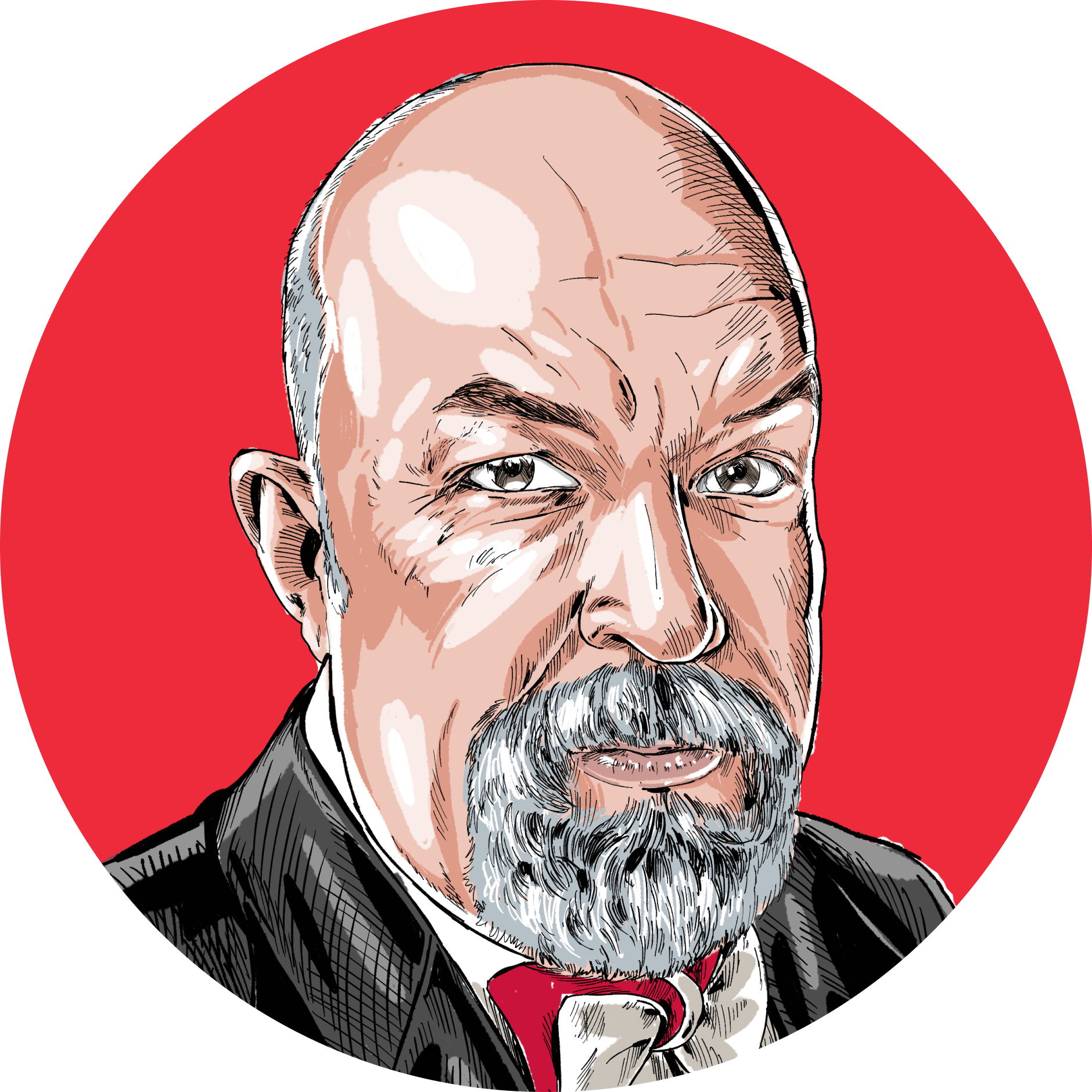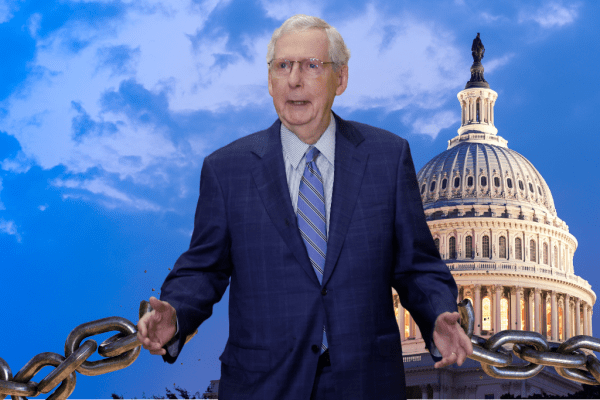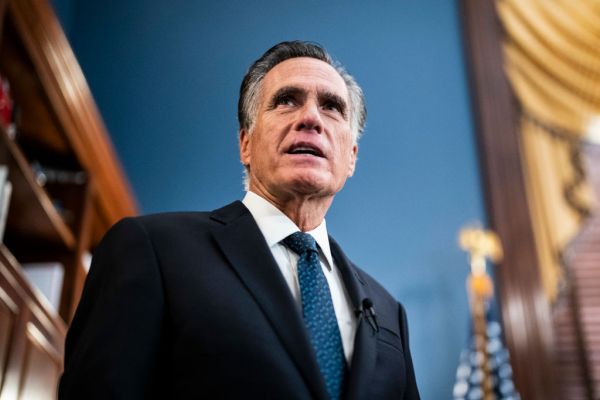Bonus Wanderland—again!
Identity Politics for White People
Here is a sobering fact worth keeping in mind between now and November 2024: If only the votes of white Americans were counted, there wouldn’t have been a single Democratic president since Lyndon Johnson. We are coming up on 60 years since the last time the majority of white Americans pulled the “D” lever in a presidential election.
Racial voting patterns can shift fast, shift hard, and stay shifted. Take the most dramatic example from American history thus far: In the years after the Civil War, African Americans were among the most reliable voters for Republican candidates—for the Party of Lincoln, which is what the GOP used to be before it decided it would prefer to be the party of gap-toothed Georgia neo-secessionists—right up until the day they weren’t.
That day was Tuesday, November 3, 1936. Black voters had stuck with Republicans even through the early days of the Great Depression and Herbert Hoover’s seemingly callous response to it. (Hoover was, in many ways, unfairly maligned, but that is a discussion for another day.) FDR got elected the first time with relatively few black votes. But once FDR was in, African Americans liked his program, in no small part because the black workforce—still heavily concentrated in agriculture and agriculture-adjacent work at that time—had been suffering from what we might call the Greater Depression long before the rest of the country felt the downturn. Republicans had by that point put civil rights and the interests of their black constituents on the back burner, and black leaders bitterly resented the fact that some Republicans (perhaps including the Hoover campaign; the details remain obscure) apparently had made common cause with the Ku Klux Klan and Klan-aligned political bosses in the 1928 race between Herbert Hoover and Al Smith. Smith was a Roman Catholic, which put him squarely in the sights of the Klan, a virulently anti-Catholic group as much as a racist one.
Many of FDR’s New Deal programs were designed and administered in racist ways that denied some or all of their benefits to black workers—especially in the agrarian South—but some of them nonetheless provided practical, short-term relief to African Americans, particularly in northern cities. New Deal money flowed to black schools and hospitals in the South, and a few black advisers were appointed to New Deal agencies. It wasn’t very much, but it was more than Republicans were offering, and more than they had offered in years. Before the 1932 election, the influential black newspaper publisher Robert L. Vann had famously advised black voters to “go turn Lincoln’s picture to the wall. That debt has been paid in full.” By 1936, that message had sunk in, and about 3 in 4 black voters cast their votes for the Democrat that year. By 1946, the majority of black voters chose Democrats in congressional races for the first time, too. Republicans have never again won a majority of the black vote in a presidential race or in the total vote tally in congressional elections.
Trump got 8 percent of the black vote in 2016; by 2020, he was up to about 12 percent, i.e., the same level Bob Dole reached in his lukewarm 1996 campaign. So much for those “massive” gains Trump talked about.
White Americans’ transformation into a solid Republican bloc—fortified by the transfer of partisan allegiances among white Southerners—was a more gradual affair, but it began around the same time for the same reason: the New Deal. It is not as though the controversies of the civil rights era did not have an impact on the racial character of American politics—of course they did—but the racial transformation of the parties was complete long before Barry Goldwater’s doomed 1964 presidential campaign. What happened after 1964 was that Republicans went from losing the black vote by a solid majority to being shut out almost entirely: Dwight Eisenhower won 39 percent of the black vote in 1956, and Richard Nixon won 32 percent in 1960; Goldwater, running against the Civil Rights Act, crashed to 6 percent. Ronald Reagan got all the way up to 14 percent of the black vote in 1980, a level that no Republican candidate has since matched. It is worth noting that Reagan did much better among African Americans in his hard-edged 1980 campaign than he did in his soft-focus “Morning in America” campaign in 1984, when he won only 9 percent of the black vote. Black families had a relatively good run of it in the 1980s: For example, median black household income rose 84 percent over the decade, as compared to only 68 percent for white households. But other elements of the Reagan agenda apparently repelled African Americans, who have not shown much interest in aligning themselves with the modern American conservative movement .
There is, of course, a great deal of diversity within black America and within white America. But as different as the life of a free black tradesman in Philadelphia was from the life of a slave on a Mississippi plantation, there is a sense in which black Americans as a sociopolitical whole have, or at least long had, more in common with one another than white Americans did. Exclusion and marginalization forcibly made African Americans into a bloc. The language of past decades (including that of well-intentioned commentators) treated African Americans as though they were an undifferentiated mass—“the Negro,” singular, was the linguistic stand-in for millions of black Americans.
Even in countries without the United States’ wretched history on this score, members of racial, ethnic, or religious minorities often vote as blocs. Sometimes, there are obvious reasons for that: In the United Kingdom’s 2019 general election, for example, British Jews were about as divided on Brexit and Boris Johnson as was the country at large, but some 93 percent of them told pollsters that they would not vote for the Labour Party, and nearly 40 percent said they would give serious thought to emigrating from the United Kingdom if the prime minister’s office went to Labour leader Jeremy Corbyn, whom the great majority of British Jews judged to be an antisemite, for very good reason. (The reason: He is an antisemite.) In some democratic countries, such as Malaysia (an imperfect and partial democracy, to be sure), racial politics is very much out in the open. In the United States, no one campaigns to lead the white people’s party by declaring himself the political champion of white people—it just works out that way without anybody quite saying so.
Bloc voting among minority groups seems in some ways natural. Bloc voting among majority groups—which is, of course, far from unheard-of—somehow feels different. Both minorities and majorities can be horrifyingly oppressive—surely the warm glow of majoritarianism did not make black Americans feel any better about being terrorized by a white majority than black South Africans felt about being under the heel of a white minority—but there is a reason liberal constitutional orders are conscious of the rights and interests of ethnic, religious, and political minority groups. (The U.S. constitutional order as originally implemented contained many protections for many minority groups, too—even as it simply excluded African Americans from these protections and most others, in some cases all others.) Nobody really needs it explained to him why a National Association for the Advancement of White People or a White History Month would land differently on the American psyche than does the NAACP or Black History Month, just as nobody really needs it explained to him why a rowdy White Pride Parade in New York City is a different proposition from the annual Puerto Rican Day Parade.
The Democratic Party has long been a party of naked interest-group coalition politics. The last overriding principle for which the Democratic Party was willing to lose votes, after all, was white supremacy in the South. Since abandoning overtly racist politics (it is worth reiterating that the Democratic Party abandoned its historical racism and adopted a civil rights agenda almost two decades after becoming the party of the majority of black voters), the Democrats have practiced a familiar, even old-fashioned version of spoils politics. (The identity-politics stuff is mostly marketing rhetoric; talk about “intersectionality” all you like, the Democratic Party is still run by little old progressive white ladies—Randi Weingarten of the teachers’ union eats the political demands of a dozen social-justice warriors for breakfast every morning and would gleefully cut as many throats as needed metaphorical cutting if that meant an extra $1/hour for her members.) As has been observed many times over the years, there isn’t any obvious reason for blue-collar Catholic union workers in Philadelphia to be locked in a tight political embrace with the abortion-rights lobby or the transgender activists, but the Democrats have, to a sometimes surprising degree, made that work.
The Republican Party long provided a useful political service by presenting itself (with varying degrees of candor, to be sure) as a mainly ideological party, a party committed to certain general principles. That these principles were frequently abandoned in the pursuit of political advantage and imperfectly realized even when a genuine effort was made on their behalf is, for the purposes of this discussion, immaterial. Even if it were the case that, as many of our progressive friends insist, the Republicans’ ideological position was always camouflage for a party of white people’s identity politics and joint racial interests, the pretense mattered—if it was a myth, then it was a valuable one. A Republican Party that presents itself (and maybe even understands itself) as a conservative ideological party that reliably enjoys the support of a majority of white voters in presidential elections is a very different kind of political animal from a GOP that presents itself—and understands itself—as the champion of the social, political, and economic interests of white people per se. The talk about courting the “white working class,” which predated the Trump campaign but took off with it, was the camel’s nose of identity politics under the ideological tent. It is not the case that the current nationalist-populist tendency in the GOP always talks about “identity” questions from the point of view of white people and white people’s interests—it was very amusing that all of the identity talk at the recent GOP presidential debate came from Vivek Ramaswamy, presumably a Ramaswamy of the Mayflower Ramaswamys.
A politics of principle is healthier and more dynamic than a politics of racial identity, if only because you can argue with people and change their minds about issues and principles—you cannot argue white people out of being white, Korean Americans out of being Korean-American, women out of being women, etc. It sometimes seems that Democrats eager for a more frank kind of racial identity politics are not good at math: About 70 percent of the overall electorate is made up of non-Hispanic whites, and about 60 percent of the Democratic electorate is made up of non-Hispanic whites. Center-left advocates who once believed that demographic change was going to stack the odds in favor of Democrats have had to think again. (It is of interest to me that Ruy Teixeira, coauthor of The Emerging Democratic Majority, is today a scholar at the American Enterprise Institute; I think of the left-wing civil libertarian Nat Hentoff, chased out of his longtime position at the Village Voice for nonconforming views on abortion before finishing his career at Cato. Teixeira isn’t any less a liberal today—he publishes a newsletter called “The Liberal Patriot”—but the enforcement of orthodoxy is so ruthless on the left that such liberals find it more amenable to work at explicitly right-leaning institutions such as AEI or Cato, which are much more genuinely committed to intellectual openness than are, say, Yale, the Progressive Policy Institute, or The Atlantic.) If we are to have a system of plain and open racial identity politics, then it seems inevitable that white people and white institutions will come out on top in a country that is still 60 percent non-Hispanic white. The immigration policies that were largely driving the demographic change that once commanded the attention of Teixeira are choices, not inevitabilities.
The problem for Republicans who prefer a politics of principle to a politics of raw power based on naked interest (including racial interest) is that conservatism always has been—and always will be—a hard sell in the United States, a diverse and dynamic society to which conservatism does not come naturally. As the past few years have made clear, conservatism does not come naturally even to Republicans—or to people who call themselves “conservatives” and who think of themselves as that but who are nonetheless easily seduced by populists passions, short-term objects of excitement, and by the promise of gaining raw power and wielding it against those they perceive as their rivals and enemies. If you think you can have a politics oriented toward mobilization against a shared enemy without having that descend into plain racial politics in a competitive and multiracial society, you are going to be disappointed. The tiki-torch Nazis in Charlottesville and the racist-manifesto mass-shooters may not speak for all of the still-emerging nationalist-populist right, for a majority of it, or even for a very large share of it—but they don’t come out of nowhere, either.* It is a very strange moment, of course: The new-right types may be denouncing Joe Biden as a “Marxist” or they may literally be working with Marxists, but the underlying sense of tribal cohesion remains strong enough to offset the intellectual incoherence at the center of the endeavor.
The only open question in a politics of “Us and Them” is: Who is Us? Who is Them? And if that is all there is left to talk about, then there isn’t really anything left to talk about.
Economics for English Majors
The United Auto Workers union has organized a strike against Ford, General Motors, and Stellantis, the Dutch owner of the Dodge, Ram, Chrysler, and Jeep brands.
Question: Will anybody notice?
As of late 2022, none of the largest U.S. car factories were producing Fords, any of the General Motors marques, or any of the Chrysler-Dodge-Ram-Jeep brands. The most productive car factory in the United States last year, as Bloomberg ran the numbers, was Tesla’s factory in Fremont, California, producing 8,550 cars a week. No. 2 was Toyota’s plant in Kentucky, followed by BMW’s operation in South Carolina. Next was another Toyota plant, the one in Princeton, Indiana. None of the formerly Big Three made the list until—this will not surprise you—Ford’s truck factory in Kentucky in fifth place.
Everybody knows that Detroit isn’t what it once was. Do you know why Detroit ever was what it once was—the capital of the U.S. automotive industry?
Some of Detroit’s rise to predominance in the U.S. automotive industry was happenstance: Henry Ford was from Michigan, Ransom Olds lived in Michigan, and, like many industrial founders of their era, they set up shop in or near their hometowns. When businesses say, “Our people are our most important asset!” they are very often blowing smoke, but, in many cases, that is absolutely true. Before Michigan was a leader in automotive engines, it was a leader in marine engines, and it had a ready supply of workers whose skills could readily be adapted to the automotive industry, both by the carmakers themselves and, at least as important, by partner firms engaged in making parts and components. There were dozens of new car companies launched in the last years of the 19th century and early years of the 20th, and most of them were either in Ohio or in New England. Owing partly to the natural tendency to start with the familiar, many New England makers leaned toward steam engines, and many of the Ohio firms invested (too soon!) in electric. The Michigan innovators leaned more heavily toward gasoline, which turned out to be the successful technology (for a good long while). Michigan already had an edge in human capital, and the success of the Michigan firms compounded that. (In his famous work on economic geography, Paul Krugman developed a model based on the “interaction of economies of scale with transportation costs.” It is very interesting reading for those interested in why certain industries or innovations happened in particular places. Why Detroit? Why Hollywood? Why Silicon Valley?) Henry Ford was a brilliant businessman and innovator, but he had a real advantage working where he worked and with the people he had available for collaboration.
Those advantages are important, but they often become less important for more mature industries. There was a time when you really needed to be in Michigan if you wanted to start a U.S.-based automotive company. That isn’t the case anymore. There was a time when certain businesses (advertising, finance, fashion, book publishing, media) really needed to be based in New York City or to have an office there—but nobody really needs to be on Wall Street in 2023. There are lots of gifted, educated, and skilled people in New York City, but it no longer has its former commanding position, which was a near-monopoly on talent in several important industries. (It was the happy co-location of the grubby money-chasing businesses with the creative and artistic enterprises that made New York City such a special place in its heyday.)
There are many creative, lucrative, high-status jobs Americans can do from lots of places, and there are a whole lot of people who once would have been Wall Street guys who prefer the pace and quality of life in Austin or Charleston or some other place to Manhattan. Now, instead of businesses needing to go where the top talent is concentrated, it is cities and regions that have to work to attract human capital in the hopes of recruiting new businesses and expanding economic activity. Cities like Dallas and Denver may beat the big coastal metros on cost of living, but cheap housing isn’t everything. In the long run, these cities will need to make big improvements when it comes to crime, schools, and infrastructure to remain competitive. The more choices workers have about where to live, the more cities and towns will have to do to attract those workers.
Would you start a car company in Detroit today? Of course not. What happened to Detroit didn’t happen because of competition from Toyota and Honda. It happened because Detroit was run by fools and criminals for half a century or more. When the most productive workers left, Detroit’s great advantage disappeared.
Words About Words
A brace is a pair of something. In one of the Lord of the Rings films, Sam declares: “There’s only one way to eat a brace of coneys,” meaning a pair of rabbits. (In the modern world, rabbits inhabit an uncomfortable space between pet and dinner.) Or, from Game Preservers and Bird Preservers, 1875: “To increase the annual rental of Scotch moorland, and to feel certain that at least thirty brace of grouse will fall to each gun after a whole day’s sport, are the greatest delights of a certain few, according to whom every other consideration must be put in abeyance.”
Jonathan Swift warns a thirsty colleague about keeping wicked company:
Some ancient authors wisely write,
That he who drinks will wake at night,
Will never fail to lose his rest,
And feel a streightness in his chest;
A streightness in a double sense,
A streightness both of breath and pence:
Physicians say, it is but reasonable,
He that comes home at hour unseasonable,
(Besides a fall and broken shins,
Those smaller judgments for his sins;)
If, when he goes to bed, he meets
A teasing wife between the sheets,
‘Tis six to five he’ll never sleep,
But rave and toss till morning peep.
Yet harmless Betty must be blamed
Because you feel your lungs inflamed
But if you would not get a fever,
You never must one moment leave her.
This comes of all your drunken tricks,
Your Parry’s and your brace of Dicks;
Your hunting Helsham in his laboratory
Too, was the time you saw that Drab lac a Pery
But like the prelate who lives yonder-a,
And always cries he is like Cassandra;
I always told you, Mr. Sheridan,
If once this company you were rid on,
Frequented honest folk, and very few,
You’d live till all your friends were weary of you.
But if rack punch you still would swallow,
I then forewarn’d you what would follow.
Brace also means to reinforce something, and both senses of the word come from the same root (Latin bracchium, Greek βραχίων) meaning arm. The long-armed dinosaur is Brachiosaurus, the arm-lizard. The arms clasp around (em-brace) something or support it, and arms typically come in pairs. Hence braces as in suspenders, which come in pairs and support one’s pants, embracing both senses of brace. (Oscar Wilde was pro-braces and anti-belt, writing: “The first and last rule is this, that each separate article of apparel is to be suspended from the shoulders always, and never from the waist. Nature, it should be noted, gives one no opportunity at all of suspending anything from the waist’s delicate curve.”) Bracing stuff, to be sure.
Swift’s streightness above is a relation of our modern English strait, meaning narrow, as in the straits that divide Taiwan from China, a body that may turn out to make literal the figurative expression dire straits, which is not just the name of a band. (RIP Jack Sonni, “the other guitar player.”)
From the sense of narrow we get difficult, challenging, severe, or limited, uses that have evolved in English: “strait is the gate and narrow the way,” (Matthew 7:14, KJV) “I shew yow the streytnesse of my grevaunce, / And all to meve yow to my mercy’ (“Croxton Play of the Sacrament,” c. 1491), “myn hous is streit,” (“The Reeve’s Tale”), etc. In “Dictionaries of the Scots Language,” (Dictionars o the Scots Leid) it is rendered straitnes.
Strait-related words are sometimes confused with straight-related words, but straight comes from a different root: the Old English word for stretch—that which is straight is like a piece of string stretched out, without curve or deviation.
Fail to keep that straight and you’ll end up in dire usage straits indeed.
Muppet News Flash
Elsewhere
From my New York Post column on Sunday:
Americans’ “record wealth” is mostly the product of asset-price inflation, not of strong economic growth—real GDP growth for the last year and a half has been only 1.33% per year on average.
Think of it this way: If you have a freezer full of hamburger meat, it would have been worth $4 a pound on the day Biden was inaugurated and it is worth $5 a pound today—that’s a 25% gain, on paper, but you don’t feel any richer: You still have the same freezer full of hamburger, it just would cost more to replace it.
Because of persistent inflation, Americans’ “real” (meaning inflation-adjusted) incomes are taking a beating.
You can buy my most recent book, Big White Ghetto, here.
You can buy my other books here.
You can see my New York Post columns here.
*Correction, September 21, 2023: This article originally referred to Charlotte as the site of a 2017 white supremacist rally. The event took places in Charlottesville, Virginia.









Please note that we at The Dispatch hold ourselves, our work, and our commenters to a higher standard than other places on the internet. We welcome comments that foster genuine debate or discussion—including comments critical of us or our work—but responses that include ad hominem attacks on fellow Dispatch members or are intended to stoke fear and anger may be moderated.
You are currently using a limited time guest pass and do not have access to commenting. Consider subscribing to join the conversation.
With your membership, you only have the ability to comment on The Morning Dispatch articles. Consider upgrading to join the conversation everywhere.